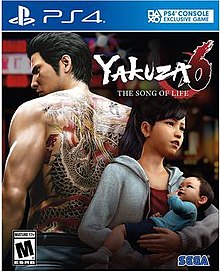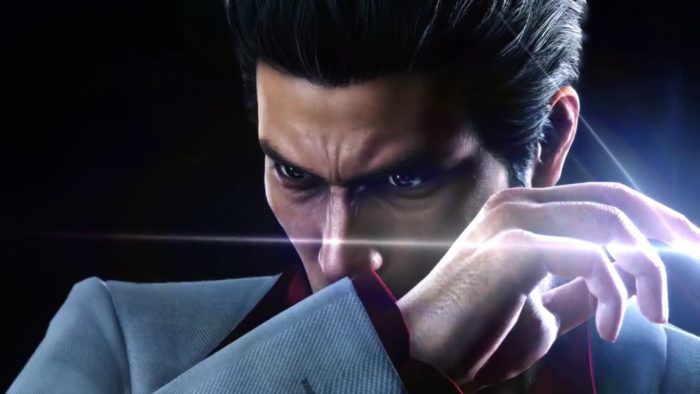Mahjong In Media: Beating the Yakuza
Over the years of running demos, teaching new players, and attending events, I have been approached by my fair share of people who want to know how to play riichi (Japanese mahjong) for one reason: so they can beat the mahjong minigame in the latest Yakuza video game!
The Yakuza franchise (Ryū ga Gotoku 龍が如く) has been released on the PlayStation platform since 2005, with the remake, Yakuza Kiwami, hitting the PC in 2018. Minigames have always been a deep part of the Yakuza experience, primarily as money farming and sub-plots. The inclusion of mahjong was likely a no-brainer for the writers and designers at Sega since it was initially produced for and about a Japanese market where mahjong was a cultural norm. It would be clearly ridiculous to claim that all Japanese are active riichi players, therefore this minigame provides no obstacle. However, I would hold mahjong up in comparison to the cursory knowledge of poker that many Westerners emerge from adolescence with. They have likely accrued a basic awareness of it by the the time they started adulting. The Western continents don’t benefit from the same cultural steeping of mahjong the way the East does, so the introduction of Yakuza to the West has continued to spawn a healthy collection of Reddit threads with titles such as:
- Help me understand Mahjong: Why can I not complete my set sometimes?
- I’ve concluded that Mahjong is literally impossible to understand.
- Why isn’t this a complete hand in Mahjong?
- I must have played 50 mahjong games without winning now, what in the world?
The list goes on and on, some with not-so-nice words involved.
So let me lay out what I see as the crux of the issue, everyone. If you don’t take the time to understand the basics of the game, you’re not going to have a good time.

Note: for the rest of this article, I’m going to focus on Yakuza 6 available on the PS4. Veteran riichi players are going to scoff at the over-simplification in the advise below, but let’s keep the focus of this article in mind: I’m not writing for their benefit as they likely don’t need help beating the yen off Yakuza’s simple AI. I’m writing to the benefit of gamers that find the strategy and rules of riichi baffling.
Yakuza 6 doesn’t require you to master mahjong to earn the Platinum trophy—you simply have to try each minigame. However, there are a few achievements that can be pulled from playing: winning up to 30 hands (achievements awarded at 5, 10, and 30 hands) and placing first at each of the four tables and in each tournament.
If you don’t take the time to understand the game, you’re not going to have a good time.
The game offers you basic game rules in the form of a 19 “page” summary covering the tiles, layout, melds, some beginner tips, and special hands. This is a nice intro, but it’s hardly comprehensive. Fortunately there are many guides and resources that can offer a solid introduction. Barticle’s Introduction to Japanese Mahjong has been a staple on the Yakuza wiki for a handful of years. Do yourself a favor and read it.
The game intro also has a help menu offering a list of viable hand patterns (yaku), each worth a stated number of hand points (han). This brings us to our first commonly misunderstood concept of riichi:
#1: You must have at least one hand point to win, and dora doesn’t count!
While the stated goal is completing a hand of four sets of three and one pair, that simply isn’t enough—your assembled hand must meet the criteria for one or more hand patterns listed in the help section. The game introduction suggests that you focus on the all-simples hand (turn the Kuitan option ON to make the fastest use of this) or the Dragon/Wind triplet as these are very easy to make.
I have noticed that the AI in Yakuza isn’t super picky. Many hands won by your opponents are simply riichi + dora and there is a reason for this. Making a ready hand from your own draws is fairly fast and easy and puts you in a position to win without the overhead of a specific hand pattern. This segue’s into commonly misunderstood point number two.
#2: Your hand must be fully concealed to riichi.
A declared riichi satisfies the minimum points needed to win (unless you have turned on the 2 Han minimum option) without having to shape up any additional hand patterns. Additionally you can take advantage of the ura-dora (bonus dora tiles revealed to the player who wins with a riichi) to hopefully add greater value to your hand. However the ability to declare a riichi is void when you have an open hand; that is to say that you have melded discards in a chi or pon. Keeping your hand closed offers you the most choices.
Since the AI has no compunction about running straight for the riichi + dora hand, you also need to move quickly. Efficiency is key.
#3: Fast hands will win more often.
You might feel like a bad-ass chasing down a limit hand, but it can come to nothing if you’re beat by a faster no-points hand. There are a couple of basic rules to efficiency that you can employ to quicken your hands.
- A sequence of adjacent suit tiles that can be completed with two different tiles, such as a 3-4 waiting on a 2 or 5 to complete, is more versatile than most other patterns. Try not to break these up if you can help it. Clusters of four or five closely numbered suit tiles are even better.
- Keep at least one pair in your hand if you have one. Pairs are sometimes tough to put together, so don’t break up a pair unless you have another one handy and nothing else obviously safe to discard.
- Pay attention to opponent discards so you don’t put yourself in a position to wait on a tile that has been heavily discarded. Remember, there are only four of each tile in the set—waiting on the 1-dot with two in your hand and two on the table is pointless.
- The majority of your patterned hands are going to come from the 1-han or 2- han categories. Focus on these as many of them can stack to increase your score. Limit hands are fun but impossible to consistently rely on.
No doubt the idea of furiten has left many a gamer swearing at their screens. A core difference between riichi and other forms of mahjong is that your are directly accountable for your discards throughout the hand. Why else do you think Japanese mahjong requires neat little rows of discards instead of just chucking them in the middle? This accountability brings us to the last misunderstood point of mahjong for this post.
#4: If your hand is ready, and any of your wait tiles are in your own discards, you may only win the hand through a self draw.
A ready hand is one that is all shaped up except for one tile needed to finish; it is possible to be waiting on more than one type of tile. There are two ways to win the hand at this point: draw it yourself (tsumo), or win off of another player’s discard (ron). This is where furiten can rear its ugly head. If any of the tiles you are waiting on are represented in your own discards, all of your wait tiles are void for a ron.

Know Your Options
There are a few settings available that can help you succeed at the tables.
Game Length
This offers a Full or Half game setting. Full game is a 8-plus hands, and half game is 4-plus hands. I say “plus” hands because a dealer win gives the dealer another round.
Kuitan
This option is probably responsible for a large amount of puzzled faces. This on/off setting respectively allows or disallows the all-simples hand (tanyao) to be open. Many of the “why doesn’t this hand win?” threads are examples of open tanyao with Kuitan turned off.
Two Han Minimum
This setting raises the minimum to win a hand to two hand points. Tired of the AI beating your mangan hand with and el-cheapo yakuhai or riichi-only hand? Turn this on.
Red Dora
Turning this option on will replace a handful of the suited 5 tiles with red versions. While this doesn’t count towards your hand minimum, inclusion of red dora can significantly increase the value of your hands. It will increase the value of the AI’s hands as well, so caution advised. If you’re playing well against the AI and want to increase your end-game winnings, turn this on.
